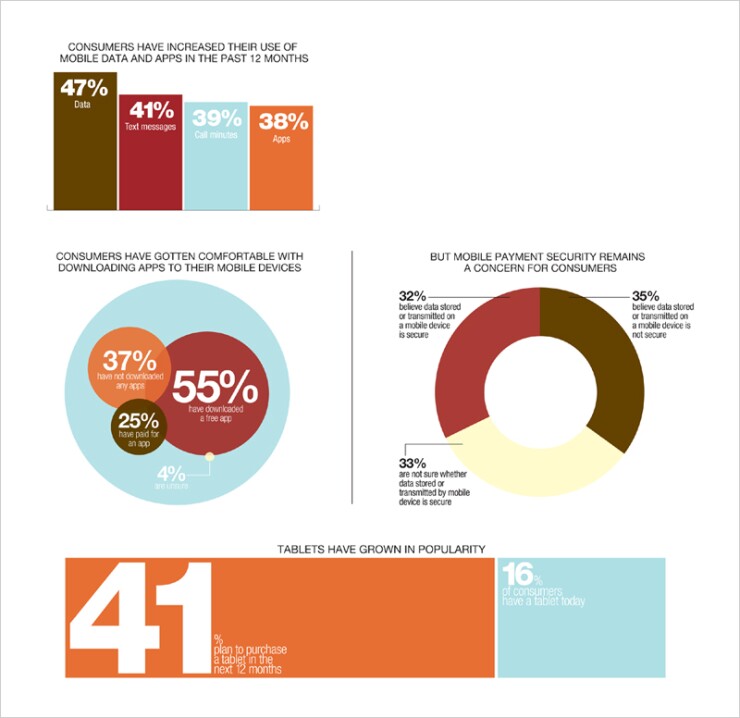
Banks have shown signs lately of a reawakened interest in the small-business customer. A recent survey conducted by the consulting and research firm Novantas found that more than half of banks polled plan to increase their investment in technology aimed at the small-business market.
At Fifth Third of Cincinnati, "We see this segment as a key strategic component to our current and future business; we have spent and continue to spend a lot of human and capital resources to target this market," says Pat Alcox, vice president and director of accounts payable and accounts receivables product management at the $115 billion-asset regional bank. The bank offers a remote deposit capture product for small-business customers using Wausau Financial Systems technology. It is reviewing an expanded version of this product that Wausau rolled out in December that includes customer on-boarding, risk monitoring and training support.
"This market has been traditionally underserved, and there are huge opportunities," Alcox says. "We've seen that in the past and we will continue to see it."
Independent observers agree. "Small business is the Rodney Dangerfield of retail banking," says Les Dinkin, partner at Novantas. "It just doesn't get enough respect, given its outsized financial contribution. The folks at the top of retail banks get it intellectually, but they often don't get it viscerally that small-business owners wear 17 hats and are the chief cook and bottle washer." Small-business accounts can be more complicated and require more legal forms than consumer accounts. "Small business becomes a deer in the headlights in the branch network, because the staff often aren't comfortable or confident with these conversations," Dinkin says.
The small-business segment represents about 10% to 12% of retail banking customers, but 30% to 40% of the revenue of a retail bank, Dinkin says. However, because small-business owners tend to be more affluent than the average consumer, when the value of the personal side of the relationship is added, their small-business households can represent upward of 50% of retail bank revenue for many banks.
A large chunk of small-business revenue comes from interest-free deposits, Dinkin says. "For most banks it's hard to consistently make money on the small-business loan books, on a risk-adjusted cost of capital basis. The money is largely made in deposits and fees," Dinkin says, depending on how they define the segment. "Deposit balances are often four to five times higher than personal deposits." Small-business credit lines tend to be larger and longer term, and they use more services and pay more fees than consumers, Dinkin says. "It's a compelling economic equation that's available for the taking by the banks who get their act together."
Signs indicate that banks are starting to pay much more attention to this group technologywise. A survey that the Novantas subsidiary Novarica recently completed of 32 banks on its Technology Research Council and with clients found that 56% are planning to spend more on small-business information technology in 2012 - more than any other market segment. (These banks also plan to spend 60% more on common infrastructure.)
Part of this is a recognition that the small-business segment generates a disproportionate amount of earnings versus consumers, Dinkin says, especially now that the consumer segment is under regulatory siege. Banks' small-business investments are also catching up; this segment has been underinvested in for a number of years.
Some of the spending will go toward improving market and customer analytics, proactively targeting the best prospects, customers and noncustomers by using sales tools and sales leads.
Online banking is a top IT investment priority for 45% of the bankers surveyed. "In many cases, this is making small-business online banking sites look and feel like consumer online banking apps," Dinkin says.
One thing banks should do with their small-business online banking apps is streamline. "If real estate is about location, location, location, online is about simple, simple, simple," Dinkin says. Another is to create an integrated view of personal and business account information for small-business owners. The ability to look at the business and personal situation together would encourage more small-business owners to go online to simplify their financial management, he says.
The second most-cited small-business IT initiatives are around business intelligence and analytics - 35% of the bankers Novarica surveyed said such projects are a high priority. "They are looking to get more analytical and less anecdotal around understanding what the potential wallet-deepening opportunities are with current customers," Dinkin says.
Third on the surveyed bankers' IT wish list for the small-business segment are branch sales tools that can be used to help branch staff suggest products to offer; an example would be platform automation augmented with product propensity analytics.
Next on the bankers' lists are straight-through processing for loan origination and account opening. "STP for loan origination is often not very automated at many banks today," Dinkin says.





